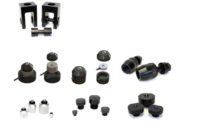OTHER DIMENSIONS: Calibrate Your Criteria
Let's imagine the unthinkable occurs, and an accident takes place that involves a product you manufacture. Your company becomes the target of legal action, and before you know it, a plaintiff's lawyer has subpoenaed your quality records, including those relating to the instruments and gages used to verify the product. Lawyers are getting smarter all the time. You have no fear. You maintain meticulous records. But, your company lawyers may not feel comfortable when they look at what your records indicate. What you have in writing could become a nightmare for them.
Why such a reaction? Aren't meticulous records preferred? Let's look at something simple like an equipment calibration report. If you have named a published standard as the measure by which a gage or instrument must comply, and your calibration report from an “independent“ laboratory indicates that tool doesn't meet the standard requirements, that report will be touted as proof that your quality records don't mean much because your equipment didn't meet the standard you chose as the measure. The fact the equipment could be five times worse than the standard calls for and still be satisfactory for your use will get lost in the rantings and ravings of a courtroom trial.
Far fetched? No. Likely? Maybe, maybe not. However, while manufacturers may not face a trial, many will face this and similar situations from quality auditors.
The problem arises because you've given decision-making authority to an outside laboratory—something with which I doubt your lawyers will be comfortable. And you've given that laboratory the wrong criteria on which to base their decision—a standard for new equipment rather than the used equipment you use regularly and are sending for calibration. It could get worse for you if the laboratory was found not to have verified all of the elements required in the standard and they simply stated the equipment met the standard.
To avoid such problems, whether from lawyers or auditors, think carefully before using new equipment standards as acceptance criteria for measurement tools after those tools have been put in service. Acceptance criteria decisions should be based on the tolerances needed to maintain a product. This means that a manufacturer is the only one who knows enough to make realistic decisions regarding what is acceptable. And, make sure your uncertainty budgets use the same values.
To avoid the quagmire of a tool “meeting the standard,“ some accrediting agencies are advising laboratories not to put “opinions,“ i.e., accept or reject decisions, on calibration reports. In addition, they are reviewing laboratory claims that a tool meets a certain standard to ensure that statement can be supported by verification of all the criteria called for in the standard.
Manufacturers may see an added benefit to establishing acceptance criteria based on their manufacturing reality. It comes in a longer life for equipment that, while no longer meeting new equipment standard requirements, is more than suitable for the work being done.
Most calibration laboratories will do whatever the customer wants and is prepared to pay. But in some cases, such as thread gages, a different laboratory may be needed. Few outside laboratories are equipped to measure some of the features required by the standards. If the customer insists on using such standards, copies of the standards should be looked at to see what are the potential hazards in using them. Copies of the standard are available, aren't they? I know that's a radical way to look at using standards as acceptance criteria, but the quality system auditor will want to see any standard listed as the source of acceptance criteria.
Remember, if strict adherence to a new equipment standard is what a customer wants, they should be prepared to pay much more for the calibration, as well as for new equipment that may not even be needed.
In the future, the customer may get some interesting comments when it asks a laboratory to certify a measurement tool. But, as pointed out by a lawyer at a recent meeting of the American Measuring Tool Manufacturers Association, there are some potentially risky legal ramifications in using the word “certify.“
“Don't 'certify' anything,“ the lawyer advised.
It looks like the lawyers may put decision-making into an upload situation, back where it rightfully belongs.
Think carefully before using new equipment standards as acceptance criteria for measurement tools after those tools have been put in service.
Hill Cox is president of The American Measuring Tool Manufac-turers Association (AMTMA) and is chair of its technical committee. He is also president of Frank J. Cox Sales Ltd. (Brampton, Ontario, Canada.) He may be reached at CoxH@bnp.com.
Looking for a reprint of this article?
From high-res PDFs to custom plaques, order your copy today!




